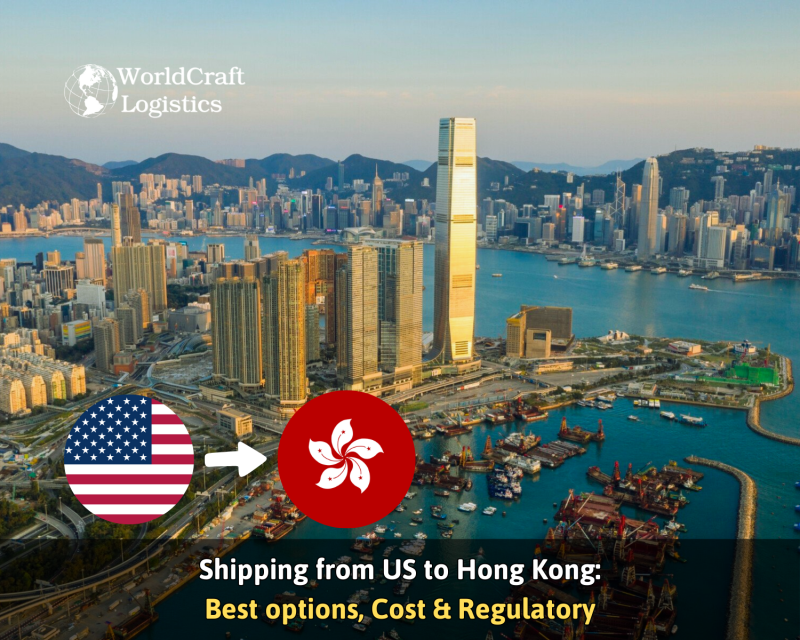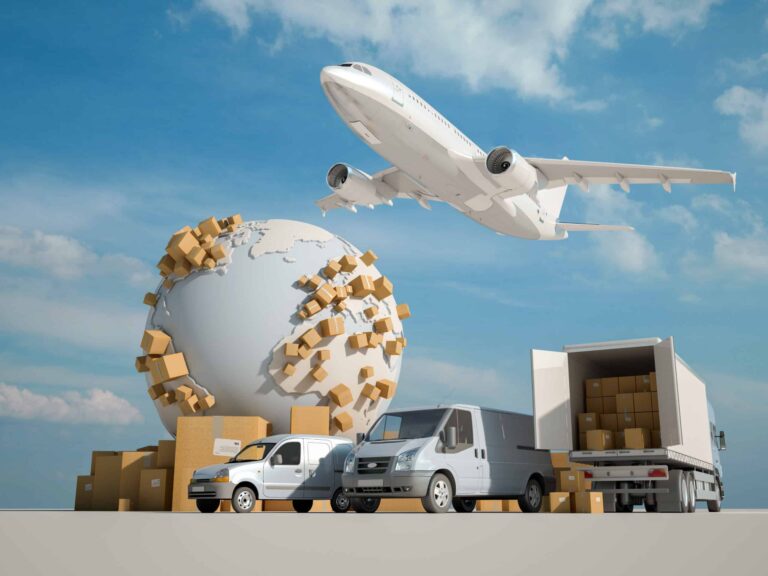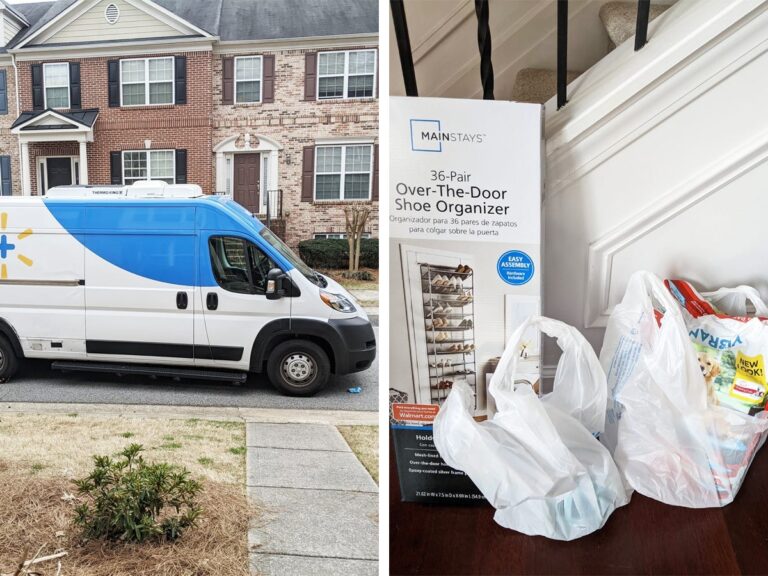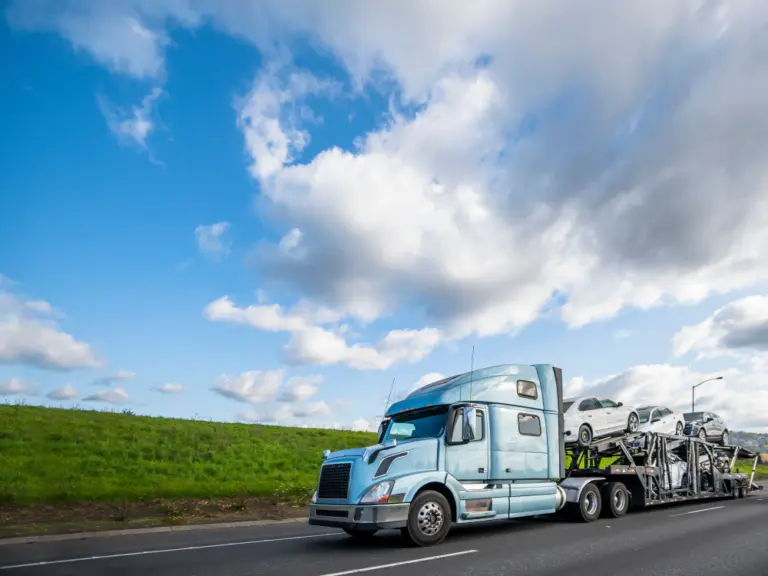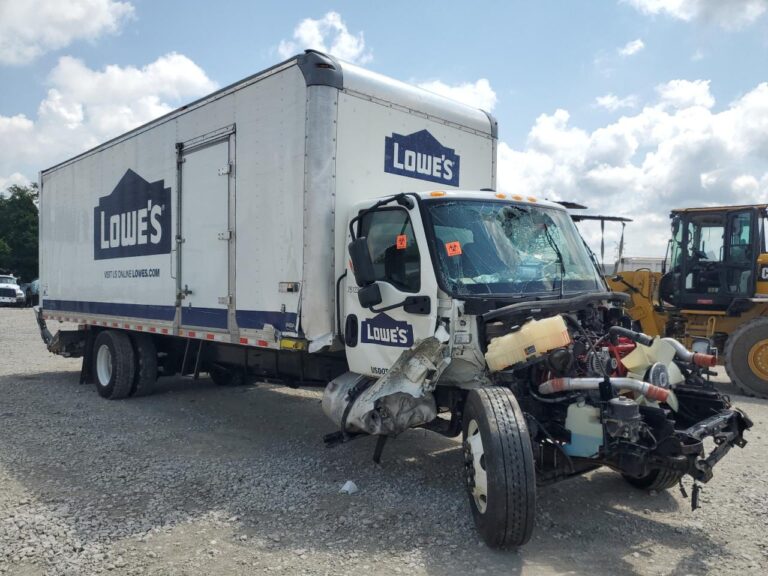The Definitive Guide to Shipping From Hong Kong To United States: R…
Your Complete Guide to shipping from hong kong to united states
Navigating the Complexities of International Shipping
Shipping goods from Hong Kong to the United States is an essential component of global trade, yet it presents a myriad of challenges for businesses. One major hurdle that shippers face is the complexity of selecting the most suitable shipping method, which can significantly impact cost, transit time, and overall efficiency. Whether you’re a seasoned importer or an emerging exporter, understanding the intricacies of international logistics is vital for maintaining competitiveness in today’s fast-paced market.
In this comprehensive guide, we will delve into several key areas that will empower you to navigate the shipping process with confidence. We will explore the various shipping methods available, including Full Container Load (FCL), Less than Container Load (LCL), air freight, and express shipping options. Each method has its own set of advantages and drawbacks, and knowing when to use each can lead to substantial cost savings and improved delivery times.
Cost is another critical factor that can influence your shipping strategy. We will provide insights into the factors that affect shipping rates from Hong Kong to the U.S., such as cargo dimensions, weight, and the chosen shipping mode. By breaking down the complexities of pricing, you’ll be better equipped to budget for your shipments and optimize your logistics expenses.
Transit times can vary widely depending on the shipping method selected and external factors such as seasonal demand and port congestion. In this guide, we will outline the typical transit times associated with each shipping method, so you can make informed decisions based on your deadlines and service level requirements.
Navigating customs regulations is also essential for ensuring smooth shipments. We will discuss the customs clearance process and highlight common pitfalls to avoid, ensuring that your goods arrive without unnecessary delays or additional costs. Understanding the risks involved in international shipping, including potential damage and loss, will also be addressed, equipping you with strategies to mitigate these challenges.
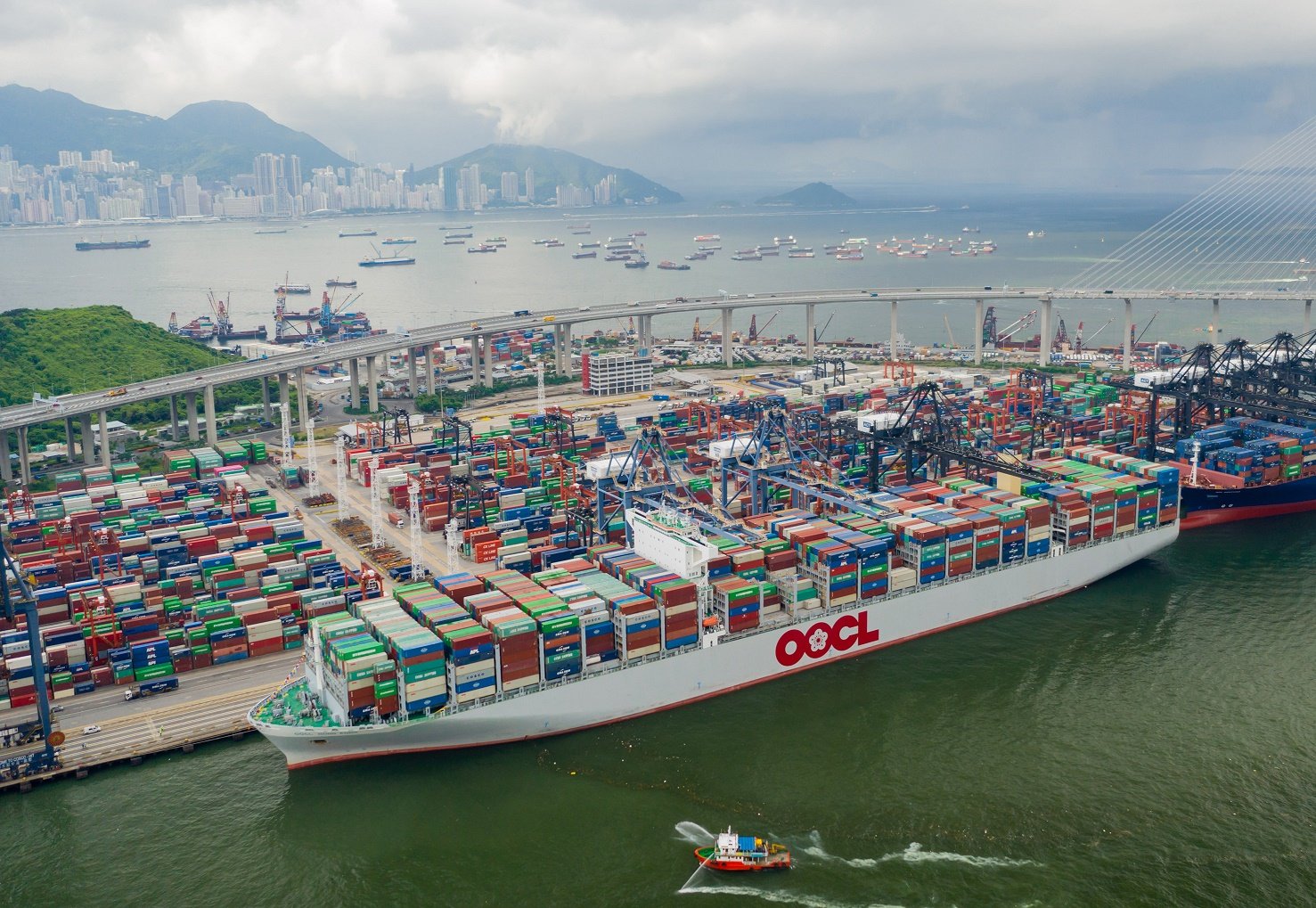
By the end of this guide, you will gain expert knowledge that will enable you to efficiently navigate the complexities of shipping from Hong Kong to the United States. With the right tools and insights, you can streamline your logistics operations, reduce costs, and enhance your overall shipping experience. Let’s embark on this journey to simplify your international shipping needs and unlock the potential of your global trade endeavors.
Table of Contents
- Your Complete Guide to shipping from hong kong to united states
- Understanding Your Shipping Options: A Detailed Comparison
- Deconstructing the Cost: A Full Pricing Breakdown
- Transit Time Analysis: How Long Will It Take?
- Navigating Customs Clearance: A Step-by-Step Guide
- A Practical Guide to Choosing Your Freight Forwarder
- Incoterms 2020 Explained for Shippers
- Risk Management: Identifying and Mitigating Common Shipping Problems
- Frequently Asked Questions (FAQs) for shipping from hong kong to united states
- Conclusion: Key Takeaways for Successful Shipping
- Important Disclaimer
Understanding Your Shipping Options: A Detailed Comparison
Overview of Shipping Methods from Hong Kong to the United States
When shipping goods from Hong Kong to the United States, selecting the right transportation method is crucial for optimizing cost, speed, and efficiency. This decision often hinges on the nature of the goods, urgency of delivery, and budget constraints. Below is a comparison table that outlines various shipping methods available for this route:
| Shipping Method | Best For | Speed | Cost Level | Key Advantages | Key Disadvantages |
|---|---|---|---|---|---|
| Sea FCL | Large volumes | 30-40 days | Low (per unit cost) | Economies of scale; flat rate regardless of fill | Longer transit time; limited flexibility |
| Sea LCL | Moderate volumes | 35-45 days | Moderate | Cost-effective for smaller shipments; flexible | Longer transit time; consolidation delays |
| Air Freight | Urgent shipments | 3-10 days | High | Fast transit; reliable schedules | Expensive; weight and size limitations |
| Express | Small, urgent shipments | 1-3 days | Very High | Fastest option; door-to-door service | Very costly; limited to small packages |
| Rail | Bulk goods | 15-25 days | Moderate | Reliable for inland transport; often lower cost | Limited availability between ports; slower than air |
| RoRo (Roll-on/Roll-off) | Vehicles and heavy machinery | 20-30 days | Moderate to High | Specialized for vehicles; easier loading/unloading | Limited to wheeled cargo; less common |
| Break Bulk | Irregularly shaped cargo | 30-45 days | Varies | Flexibility for large items; no container needed | Complex handling; higher risk of damage |
Detailed Breakdown of Each Method
Sea Freight (FCL and LCL)
Full Container Load (FCL)
– What it is: FCL shipping involves renting an entire container (typically 20’ or 40’ long) for your goods.
– When to use it: Ideal for high-volume shipments that can fill a container.
– Pros:
– Cost-effective for large quantities.
– Simplified logistics as your goods are not mixed with others.
– Quicker loading and unloading times.
– Cons:
– Higher upfront cost if you don’t fully utilize container space.
– Longer lead times (30-40 days).
Less than Container Load (LCL)
– What it is: LCL involves sharing container space with other shipments.
– When to use it: Suitable for smaller shipments that do not fill a container.
– Pros:
– More affordable for smaller loads.
– Flexibility in shipping frequency.
– Cons:
– Longer transit times due to consolidation and deconsolidation.
– Increased risk of damage due to handling.
Air Freight
- What it is: Air freight is the transportation of goods via aircraft.
- When to use it: Best for urgent or high-value shipments.
- Pros:
- Fastest shipping method (3-10 days).
- Reliable schedules and frequent departures.
- Cons:
- Higher costs, especially for larger shipments.
- Weight and size restrictions can limit shipping options.
Express Shipping
- What it is: Express services provide the fastest delivery options, typically via air.
- When to use it: Ideal for urgent, small packages.
- Pros:
- Extremely fast delivery (1-3 days).
- Comprehensive tracking and customer service.
- Cons:
- Significantly higher costs compared to standard shipping methods.
- Limited to smaller packages, which may not suit all business needs.
Rail Freight
- What it is: Rail freight involves transporting goods via train.
- When to use it: Suitable for bulk goods over land.
- Pros:
- Cost-effective for large shipments and heavy cargo.
- More environmentally friendly than road transport.
- Cons:
- Limited to specific routes and may require additional transport to/from the rail terminal.
- Slower than air freight.
RoRo (Roll-on/Roll-off)
- What it is: RoRo shipping is specifically designed for wheeled cargo such as vehicles.
- When to use it: Ideal for shipping cars, trucks, and heavy machinery.
- Pros:
- Simplifies loading and unloading processes.
- Reduces risk of damage as vehicles are driven on and off.
- Cons:
- Limited to wheeled cargo.
- Availability may vary by route.
Break Bulk
- What it is: Break bulk shipping involves transporting cargo that is too large or heavy to fit into standard containers.
- When to use it: Best for irregularly shaped items or machinery.
- Pros:
- Greater flexibility for oversized cargo.
- No container restrictions.
- Cons:
- Complex handling can increase the risk of damage.
- Longer lead times due to the need for specialized equipment.
Special Considerations
Multimodal Transport
Multimodal transport combines multiple transportation methods to optimize the shipping process. For instance, a shipment may travel by sea from Hong Kong to a U.S. port and then be transported by rail or truck to its final destination. This approach can enhance efficiency and reduce costs, especially for longer distances or complex logistics.
Specialized Options
-
RoRo (Roll-on/Roll-off): As mentioned, this is ideal for shipping vehicles and large machinery. It’s a practical option for businesses in industries such as automotive and construction.
-
Break Bulk: Companies dealing with large or irregularly shaped items should consider break bulk shipping, which allows for more flexibility and handling options.
Conclusion
Choosing the right shipping method from Hong Kong to the United States requires careful consideration of your specific needs. Whether you prioritize speed, cost, or the nature of your goods, understanding the advantages and disadvantages of each option will help you make informed decisions. Businesses should also remain aware of market conditions, potential delays, and seasonal factors that may impact shipping logistics. For optimal results, consider consulting with a logistics expert to tailor the best shipping strategy for your operations.
Deconstructing the Cost: A Full Pricing Breakdown
Understanding the Costs of Shipping from Hong Kong to the United States
When shipping goods internationally, particularly from Hong Kong to the United States, a comprehensive understanding of the costs involved is crucial for businesses. Costs can vary significantly based on multiple factors, including the shipping method, weight, volume, and additional services required. Below, we will break down the primary cost components and provide insights into how to manage these expenses effectively.
Main Cost Components
Shipping costs can generally be categorized into three primary components:
-
Main Freight: This includes the core transportation cost for moving goods from the origin to the destination. It varies depending on the mode of transport—ocean freight (FCL or LCL) or air freight.
-
Origin Charges: These are costs incurred at the point of origin in Hong Kong before the shipment departs. They may include handling fees, documentation charges, and customs clearance fees.
-
Destination Charges: Costs incurred once the shipment reaches the United States. This may include unloading fees, customs duties, and any local delivery fees.
Detailed Cost Factor Analysis
Main Freight
The main freight cost is the largest component of your total shipping expenses. It is influenced by several factors:
- Mode of Transport: Ocean freight is generally more economical for large shipments (FCL or LCL), while air freight is faster but more expensive, especially for smaller shipments.
- Distance: The greater the distance between ports, the higher the freight cost.
- Cargo Type: Certain goods may require special handling or temperature-controlled environments, which can increase costs.
- Seasonality: Prices can fluctuate based on peak seasons (e.g., holiday shopping) when demand for shipping increases.
Origin Charges
Origin charges are incurred before the shipment leaves Hong Kong and can include:
- Handling Fees: Charges for loading and unloading cargo at the port.
- Documentation Fees: Costs associated with preparing shipping documents such as bills of lading, customs declarations, and export licenses.
- Customs Clearance: Fees for clearing goods through Hong Kong customs.
These charges can vary based on the shipping provider and the complexity of the shipment.
Destination Charges
Once the cargo arrives in the United States, several destination charges may apply:
- Unloading Fees: Charges for offloading the cargo from the vessel or aircraft.
- Customs Duties: Taxes imposed on imported goods, which vary based on the nature of the cargo and its declared value.
- Delivery Fees: Costs for transporting goods from the port to the final destination, which can vary significantly based on distance and logistics arrangements.
Example Pricing Table
Here’s a sample pricing table for shipping costs from Hong Kong to the United States. Please note that these are estimates and actual prices may vary based on the shipping provider, current market conditions, and specific shipment details.
| Shipping Method | Cost Estimates |
|---|---|
| Sea Freight | |
| 20ft Container | $1,200 – $2,500 |
| 40ft Container | $2,500 – $4,000 |
| LCL (per cubic meter) | $100 – $200 |
| Air Freight | |
| Cost per kg | $5.00 – $12.00 |
Disclaimer: The prices above are rough estimates and may vary based on various factors such as the shipping provider, service level, and current market conditions. Always consult with your freight forwarder for accurate quotes.
How to Reduce Costs
To maximize profitability and minimize shipping costs, consider the following strategies:
-
Consolidate Shipments: If possible, combine smaller shipments into one larger shipment (FCL) to take advantage of lower per-unit costs.
-
Choose the Right Shipping Method: Evaluate whether air or sea freight is more cost-effective based on the size, weight, and urgency of your shipment.
-
Negotiate Rates: Work with multiple freight forwarders to negotiate better rates, especially if you have regular shipping needs.
-
Plan Ahead: Avoid peak shipping seasons when possible to sidestep surcharges and delays.
-
Optimize Packaging: Use efficient packaging to reduce dimensional weight and avoid unnecessary charges.
-
Stay Informed: Keep abreast of changes in tariffs, shipping regulations, and market conditions that may affect shipping costs.
-
Use Freight Management Software: Leverage technology to track shipments and optimize routes, which can lead to better cost management.
By understanding the cost breakdown and strategically managing your shipping logistics, businesses can navigate the complexities of international shipping more effectively, leading to improved bottom lines and operational efficiencies.
Transit Time Analysis: How Long Will It Take?
Understanding Transit Times for Shipping from Hong Kong to the United States
When shipping goods from Hong Kong to the United States, various factors influence how long your shipment will take to arrive. Understanding these variables will help you better manage expectations and plan your logistics effectively.
Factors Influencing Transit Time
-
Shipping Mode: The choice between ocean freight and air freight is the most significant factor affecting transit time. Air freight is generally faster, typically taking between 3 to 10 days, depending on whether you opt for express or standard air services. In contrast, ocean freight can take significantly longer, often ranging from 30 to 40 days.
-
Port Congestion: Congestion at ports can lead to delays in both loading and unloading cargo. Major ports like Los Angeles and Long Beach often experience heavy traffic, especially during peak shipping seasons. This congestion can extend the overall transit time for your shipment.
-
Customs Clearance: Customs procedures can vary widely based on the type of goods being shipped. Delays in customs clearance can occur due to documentation issues, inspections, or heightened scrutiny during certain periods (like the holiday season). Proper documentation and pre-clearance services can help mitigate these delays.
-
Shipping Routes: The specific shipping route taken can also affect transit times. Some routes may be more direct, while others may require additional stops, leading to longer delivery times. Choosing the right freight forwarder with established routes can streamline the process.
-
Weather Conditions: Weather can significantly impact shipping schedules. Typhoons, storms, and other adverse weather conditions can cause delays in both air and sea transport. It’s essential to monitor weather forecasts and remain flexible with shipping timelines.
Estimated Transit Time Table
Here’s a summary of estimated transit times based on common shipping routes from Hong Kong to various destinations in the United States:
| Origin | Destination | Sea Freight (Days) | Air Freight (Days) |
|---|---|---|---|
| Hong Kong | Los Angeles, CA | 30 – 40 | 3 – 5 |
| Hong Kong | New York, NY | 30 – 40 | 5 – 7 |
| Hong Kong | Long Beach, CA | 30 – 40 | 3 – 5 |
| Hong Kong | Chicago, IL | 30 – 40 | 5 – 7 |
| Hong Kong | Seattle, WA | 30 – 40 | 5 – 7 |
Context and Explanation
The transit time estimates provided in the table are port-to-port and do not account for additional time required for processes such as cargo handling, customs clearance, and final delivery to your warehouse or facility. While air freight offers a quicker solution, it is essential to consider the cost implications, especially for larger shipments.
Moreover, it is crucial to plan for potential delays. Current global supply chain dynamics, influenced by factors such as the COVID-19 pandemic, trade policies, and increased demand for shipping, can lead to unpredictable delays. It’s advisable to build a buffer into your shipping schedules to accommodate these variables.
For shippers and businesses, understanding these dynamics allows for better planning and risk management. By choosing the right shipping mode, preparing adequate documentation, and staying informed about potential delays, you can enhance the efficiency of your logistics operations. Always consult with your logistics provider to get the most accurate and timely updates regarding your shipments.
Navigating Customs Clearance: A Step-by-Step Guide
Understanding the Customs Clearance Process
When shipping goods from Hong Kong to the United States, navigating customs clearance is a critical step that can significantly affect your shipment’s delivery time and costs. Customs clearance involves several stages that ensure compliance with U.S. regulations and the smooth passage of goods across borders. Here’s a detailed breakdown of the customs clearance process:
- Pre-shipment Preparation
-
Before your shipment leaves Hong Kong, ensure that all necessary documentation is prepared. This includes the commercial invoice, packing list, and any other specific documents required for your goods. Proper preparation can prevent delays during customs clearance.
-
Engage a Customs Broker
-
While not mandatory, hiring a licensed customs broker can simplify the process. Brokers are experts in customs regulations and can handle the paperwork, duties, and taxes on your behalf. They can also provide valuable advice tailored to your specific shipment needs.
-
Submit Required Documentation
-
Once your shipment arrives in the U.S., your customs broker (or you, if handling it independently) must submit the required documentation to U.S. Customs and Border Protection (CBP). This includes your commercial invoice, packing list, and other relevant documents.
-
Customs Examination
-
U.S. Customs may choose to examine your shipment. This can be a routine check or based on specific risk factors. The examination can delay the clearance process, so it’s crucial to ensure that all documents are accurate and complete to minimize the chances of inspection.
-
Payment of Duties and Taxes
-
After customs review, any applicable duties and taxes must be paid. The amount owed will depend on the classification of your goods and their declared value. Your customs broker can assist in calculating these costs.
-
Release of Goods
-
Once all documentation is approved and duties are paid, your goods will be released from customs. You can then arrange for transportation to your final destination within the U.S.
-
Post-Clearance Compliance
- After your goods are cleared, keep all records for at least five years, as customs authorities may conduct audits. Ensure that you comply with all post-clearance regulations to avoid penalties.
Essential Documentation
Proper documentation is crucial for smooth customs clearance. Below are the key documents required when shipping from Hong Kong to the U.S.:
- Commercial Invoice
-
This document serves as a bill for the goods and includes details such as the seller and buyer’s information, description of the goods, quantity, price, and terms of sale. It is essential for calculating duties and taxes.
-
Packing List
-
A packing list details the contents of the shipment, including the dimensions and weight of each item. This document helps customs officials verify the shipment against the commercial invoice.
-
Bill of Lading (BOL)
-
The BOL is a legal document between the shipper and carrier that outlines the type, quantity, and destination of the goods being transported. It serves as a receipt for the shipment and is required for customs clearance.
-
Import License (if applicable)
-
Certain goods may require an import license to be allowed entry into the U.S. Make sure to check if your products fall under this category.
-
Certificates of Origin (if applicable)
- Some products may require proof of their origin to qualify for preferential tariffs under trade agreements. This certificate must be obtained from the supplier.
Duties, Taxes, and HS Codes
Understanding duties, taxes, and Harmonized System (HS) Codes is essential for international shipping.
- Harmonized System (HS) Codes
-
HS Codes are standardized numerical codes used internationally to classify traded products. Each code corresponds to a specific product type and is critical for determining applicable duties and taxes. Accurate classification is crucial, as misclassification can lead to fines or delays.
-
Duties and Taxes Calculation
- Duties are calculated based on the customs value of the goods, which includes the cost of the goods, insurance, and freight (CIF). The duty rate varies based on the HS Code classification. In addition to duties, import taxes such as the Merchandise Processing Fee (MPF) may also apply. It’s advisable to consult with your customs broker to ensure accurate calculations.
Common Problems & Solutions
Navigating customs clearance can be fraught with challenges. Here are common issues faced by shippers and how to avoid them:
- Incomplete Documentation
- Problem: Missing or incorrect documents can lead to shipment delays.
-
Solution: Double-check all required documents before shipping. Consider using a customs broker to ensure compliance with all documentation requirements.
-
Misclassification of Goods
- Problem: Incorrectly classifying goods can result in unexpected duties or fines.
-
Solution: Use an experienced customs broker to determine the correct HS Codes for your products. Research your goods’ classifications thoroughly to avoid errors.
-
Insufficient Information on Commercial Invoice
- Problem: An unclear or vague commercial invoice can raise red flags during customs inspection.
-
Solution: Provide detailed descriptions of the goods, including quantity, price, and country of origin. Ensure all information is clear and concise.
-
High Duties and Taxes
- Problem: Unexpectedly high duties can affect profit margins.
-
Solution: Research applicable duties for your goods ahead of time and consider potential tariff exemptions or trade agreements that may apply.
-
Customs Inspections
- Problem: Random inspections can delay clearance and increase costs.
- Solution: Ensure that all documentation is accurate and complete. Proper packaging and labeling can also reduce the likelihood of inspections.
Conclusion
Successfully navigating customs clearance when shipping from Hong Kong to the United States requires careful planning, thorough documentation, and compliance with regulations. By following these outlined steps, understanding the necessary paperwork, and anticipating potential challenges, businesses can streamline their shipping process, ensuring timely and efficient delivery of goods.
A Practical Guide to Choosing Your Freight Forwarder
Understanding the Importance of a Freight Forwarder
When shipping goods from Hong Kong to the United States, selecting the right freight forwarder is crucial for ensuring a smooth and efficient logistics process. A freight forwarder acts as an intermediary between you and various transportation services, providing valuable expertise and support throughout the shipping journey. This guide outlines the key qualities to look for, a sourcing checklist to help you through the process, and warning signs to be aware of when choosing a freight forwarder.
Key Qualities to Look For in a Freight Forwarder
-
Experience and Expertise
Look for a freight forwarder with extensive experience in international shipping, particularly in routes from Hong Kong to the U.S. They should have a deep understanding of customs regulations, shipping documentation, and the intricacies of the logistics industry. A knowledgeable forwarder can help navigate potential challenges and provide insights that can save time and costs. -
Global Network and Partnerships
A well-connected freight forwarder should have established relationships with carriers, customs authorities, and other logistics providers. Their network can significantly impact shipping times and costs, especially during peak seasons. Ensure that they have reliable partners in both Hong Kong and the U.S. to facilitate seamless transport. -
Licensing and Compliance
Verify that the freight forwarder holds the necessary licenses and certifications, such as being a licensed freight forwarder and having the appropriate insurance coverage. Compliance with international shipping regulations is essential to avoid legal issues and delays. -
Effective Communication
Choose a freight forwarder that prioritizes communication and transparency. They should provide regular updates on your shipment’s status, be responsive to your queries, and have a clear process for handling issues that may arise during transit. Effective communication can ease concerns and help you make informed decisions. -
Technology and Tracking Capabilities
In today’s digital age, a good freight forwarder should utilize technology for tracking shipments and managing logistics. Look for forwarders that offer real-time tracking systems, online booking, and a user-friendly interface for managing your shipments.
Sourcing Checklist for Selecting a Freight Forwarder
To ensure a thorough selection process, follow this actionable checklist:
-
Define Your Needs
Assess your shipping requirements, including the volume of goods, preferred shipping mode (FCL, LCL, or air freight), and timelines. Understanding your specific needs will help you find a forwarder that can cater to them effectively. -
Research Potential Forwarders
Compile a list of potential freight forwarders specializing in shipping from Hong Kong to the U.S. Utilize online resources, industry forums, and recommendations from peers in your network to find reputable options. -
Request Quotes
Reach out to your shortlisted forwarders to request quotes. Ensure that the quotes include all potential costs, such as shipping fees, customs duties, and additional services. This will help you compare options accurately. -
Ask Questions
Engage with the forwarders and ask pertinent questions, such as: - What is your experience with shipping to the U.S.?
- How do you handle customs clearance?
- What measures do you have in place for tracking shipments?
-
Can you provide references from previous clients?
-
Check References
Before making a decision, check references and reviews from other businesses that have used the freight forwarder’s services. Inquire about their reliability, communication, and overall satisfaction. This step can provide valuable insights into the forwarder’s performance.
Red Flags to Watch Out For
While evaluating freight forwarders, be vigilant for warning signs that may indicate potential issues:
-
Lack of Transparency: If a forwarder is unwilling to provide detailed quotes or information about their services, it may indicate a lack of professionalism or hidden costs.
-
Poor Communication: If the forwarder is slow to respond to inquiries or provides vague answers, it may signal future difficulties in communication.
-
Unverifiable Credentials: Be wary of forwarders who cannot provide proof of their licensing, insurance, or industry certifications. This could lead to legal complications later.
-
Negative Reviews: Consistent negative feedback from clients regarding service quality, delays, or unexpected charges should raise concerns about their reliability.
-
Pressure Tactics: If a forwarder pushes you to make a quick decision or offers deals that seem too good to be true, it may be a tactic to rush you into a contract without due diligence.
By taking the time to evaluate these key qualities, following the sourcing checklist, and being aware of red flags, you can choose a freight forwarder that aligns with your business needs and ensures a successful shipping experience from Hong Kong to the United States.
Incoterms 2020 Explained for Shippers
Understanding Incoterms for International Shipping
When engaging in international trade, understanding the terms of shipment is crucial for both importers and exporters. Incoterms, short for International Commercial Terms, are a series of predefined commercial terms published by the International Chamber of Commerce (ICC). These terms define the responsibilities of buyers and sellers in international transactions, particularly concerning the delivery of goods. With Incoterms, shippers can clarify who is responsible for various aspects of the shipping process, including transportation costs, risk, and insurance.
Key Incoterms Table
| Incoterm | Who Pays for Transport? | Where Risk Transfers? | Best for |
|---|---|---|---|
| EXW (Ex Works) | Buyer | At the seller’s premises | Buyers wanting full control |
| FOB (Free on Board) | Seller | Once goods are on the vessel | Buyers wanting clarity on shipping |
| CIF (Cost, Insurance, and Freight) | Seller | At the destination port | Buyers wanting minimal hassle |
| DDP (Delivered Duty Paid) | Seller | At the buyer’s premises | Buyers seeking total control over the process |
Detailed Explanation of Common Incoterms
EXW (Ex Works)
Under the EXW term, the seller makes the goods available at their premises or another specified location. The buyer bears all transportation costs and risks from that point onward. This option is best suited for buyers who have experience with logistics and wish to maintain full control over the shipping process. For example, if a company in Germany purchases machinery from a supplier in Hong Kong under EXW terms, the German buyer is responsible for all arrangements, including loading the machinery onto a truck, shipping it, and handling customs clearance in the US.
FOB (Free on Board)
FOB terms place responsibility on the seller for all costs and risks until the goods are loaded onto the vessel at the port of shipment. After the goods are on board, the buyer assumes responsibility. This arrangement is ideal for buyers who prefer clarity on shipping responsibilities but do not want to manage the logistics of the initial leg. For instance, a Nigerian importer buying textiles from Hong Kong under FOB terms would have the seller cover the costs of shipping the textiles to the port and loading them onto the ship. Once on the vessel, the Nigerian buyer would be responsible for the freight and any subsequent costs.
CIF (Cost, Insurance, and Freight)
CIF terms require the seller to cover the costs, insurance, and freight necessary to bring the goods to the destination port. The risk, however, transfers to the buyer once the goods are loaded onto the vessel. This term is particularly beneficial for buyers who prefer a hassle-free shipping experience, as the seller manages most logistical aspects. For example, an Australian company purchasing electronics from Hong Kong under CIF would have the seller arrange the shipping and insurance to the Australian port. The buyer would then take responsibility once the goods arrive at the port.
DDP (Delivered Duty Paid)
Under DDP terms, the seller takes on maximum responsibility, covering all costs and risks associated with delivering the goods to the buyer’s location. This includes shipping, insurance, and customs duties. DDP is ideal for buyers who want a straightforward purchasing experience without worrying about logistics. For instance, if a US-based business orders furniture from a Hong Kong manufacturer on DDP terms, the seller is responsible for transporting the furniture all the way to the buyer’s warehouse in the US, including handling all customs duties and taxes.
Conclusion
Understanding Incoterms is essential for international shippers, importers, and exporters. By choosing the appropriate term, businesses can effectively manage costs, risks, and logistics associated with shipping from Hong Kong to the United States. Whether opting for EXW, FOB, CIF, or DDP, each Incoterm offers distinct advantages tailored to the needs of different businesses. By making informed decisions, companies can streamline their shipping processes and enhance their overall operational efficiency.
Risk Management: Identifying and Mitigating Common Shipping Problems
Introduction
In the realm of international shipping, particularly when navigating the complex route from Hong Kong to the United States, proactive risk management is not just beneficial; it is essential. Businesses face a myriad of challenges that can disrupt the shipping process, from cargo damage to customs holds. A well-structured risk management plan allows shippers to anticipate potential issues, implement effective mitigation strategies, and safeguard their interests. By understanding the risks involved, businesses can reduce costs, enhance customer satisfaction, and maintain a competitive edge.
Risk Analysis Table
| Potential Risk | Impact | Mitigation Strategy |
|---|---|---|
| Cargo Damage | Financial loss due to damaged goods, increased insurance claims, and customer dissatisfaction. | Use high-quality packing materials, ensure proper loading techniques, and consider cargo insurance. |
| Delays | Increased shipping costs, disrupted supply chain, and potential loss of sales. | Schedule shipments well in advance, utilize reliable carriers, and stay updated on port conditions. |
| Customs Holds | Delays in delivery, additional fees, and potential fines. | Ensure accurate and complete documentation, comply with U.S. customs regulations, and use a customs broker. |
| Theft and Loss | Financial loss and reputational damage. | Implement security measures such as GPS tracking, seals on containers, and work with reputable carriers. |
| Regulatory Changes | Increased compliance costs and potential shipment delays. | Stay informed about changes in trade regulations and engage with legal advisors specializing in international trade. |
Cargo Insurance Explained
Cargo insurance is a critical component of risk management for international shipments. It provides financial protection against various risks that can occur during transit. Understanding what cargo insurance covers, the types available, and its importance can significantly enhance a shipper’s risk management strategy.
What Cargo Insurance Covers
- Physical Damage: This includes damage to the goods caused by accidents, rough handling, or adverse weather conditions.
- Loss of Goods: If goods are lost due to theft, sinking, or other unforeseen circumstances, insurance can help recover the financial loss.
- General Average: In maritime shipping, if a ship encounters a peril and sacrifices part of its cargo to save the vessel, insurance can cover the loss incurred by the cargo owners.
Types of Cargo Insurance
- All-Risk Coverage: This is the most comprehensive option, covering a wide range of risks, except those specifically excluded (e.g., inherent vice, inadequate packing).
- Named Perils Coverage: This policy covers only the risks explicitly listed in the agreement, such as fire, theft, or collision.
- Liability Insurance: While not cargo insurance per se, this covers liabilities that may arise during transportation, protecting the shipper from legal claims related to accidents.
Importance of Cargo Insurance
Investing in cargo insurance is essential for several reasons:
- Financial Protection: It mitigates the financial impact of potential losses, allowing businesses to recover quickly and continue operations.
- Peace of Mind: Knowing that goods are insured provides confidence to shippers and customers alike, fostering better business relationships.
- Compliance and Professionalism: Having cargo insurance can enhance a business’s credibility and demonstrate professionalism, especially when dealing with international partners.
Conclusion
Navigating the logistics of shipping from Hong Kong to the United States requires careful planning and risk management. By identifying common risks and implementing effective mitigation strategies, businesses can significantly reduce the likelihood of disruptions. Additionally, understanding and investing in cargo insurance is a vital step in safeguarding against unforeseen events that could jeopardize shipments. Ultimately, a proactive approach to risk management not only protects assets but also enhances the overall efficiency and reliability of the shipping process, contributing to long-term business success.
Frequently Asked Questions (FAQs) for shipping from hong kong to united states
1. What are the shipping options available for transporting goods from Hong Kong to the United States?
When shipping from Hong Kong to the United States, you can choose between several modes of transport:
– Full Container Load (FCL): Ideal for large shipments that fill an entire container (20’ or 40’).
– Less than Container Load (LCL): Suitable for smaller shipments that do not fill an entire container; your goods will be consolidated with others.
– Air Freight: Offers faster transit times at a higher cost, suitable for urgent shipments.
– Express Shipping: The fastest option for small packages, though typically more expensive.
2. How long does it take to ship goods from Hong Kong to the US?
Transit times vary based on the shipping method:
– Air Express: Approximately 3 days.
– Air Freight: Generally takes about 8-10 days.
– Ocean Freight (FCL or LCL): Typically ranges from 30 to 40 days.
Keep in mind that delays may occur due to factors like customs clearance or port congestion.
3. What factors influence the shipping costs from Hong Kong to the US?
Shipping costs are influenced by several factors, including:
– Type of Goods: Certain items may incur additional fees due to handling or restrictions.
– Shipping Mode: FCL tends to be cheaper per unit for larger shipments, while LCL may have higher per-unit costs due to consolidation.
– Weight and Dimensions: Dimensional weight calculations can affect air freight pricing significantly.
– Seasonal Demand: Peak seasons, such as the holiday shopping period, can lead to price increases due to high demand for shipping containers.
4. What is chargeable weight, and how does it affect my shipping costs?
Chargeable weight is the greater of the actual weight or the dimensional weight of a shipment. Dimensional weight is calculated based on the shipment’s volume (length x width x height) divided by a specific divisor (usually 5000 for air freight). Carriers use chargeable weight to determine shipping costs, so it’s essential to understand this concept to avoid unexpected charges.
5. What is the difference between a Bill of Lading (BOL) and an Air Waybill (AWB)?
- Bill of Lading (BOL): A document used for ocean freight that serves as a contract between the shipper and the carrier, providing details about the shipment.
- Air Waybill (AWB): A similar document for air freight, which also serves as a receipt of goods and a contract for carriage but is not a negotiable instrument. Understanding these documents is crucial for proper shipping documentation.
6. Do I need a customs bond when shipping from Hong Kong to the US?
Yes, a customs bond is typically required for shipments valued over $2,500 or for goods subject to other government agency regulations. A customs bond ensures that duties, taxes, and penalties owed to U.S. Customs and Border Protection (CBP) will be paid. It acts as a guarantee that the shipment complies with all legal requirements.
7. Are there restrictions on what can be shipped from Hong Kong to the US?
Yes, certain items are restricted or prohibited from being imported into the United States. Common examples include:
– Hazardous materials
– Certain food products
– Counterfeit goods
– Items that violate intellectual property rights
Always check with CBP or a customs broker to ensure compliance with regulations regarding your specific shipment.
8. How can I track my shipment from Hong Kong to the US?
Most freight forwarders and carriers provide tracking services that allow you to monitor your shipment in real-time. After booking your shipment, you will receive a tracking number that can be used on the carrier’s website to see the current status and location of your goods.
9. What documentation is needed for shipping from Hong Kong to the US?
Essential documentation typically includes:
– Commercial Invoice
– Packing List
– Bill of Lading (BOL) or Air Waybill (AWB)
– Customs Bond (if applicable)
– Import Permits (if required for specific goods)
Make sure to verify the specific documentation needed based on the nature of your shipment and any applicable regulations.
10. How can I choose the best shipping method for my business needs?
Selecting the right shipping method depends on several factors:
– Urgency: If time is critical, air freight or express shipping is preferable despite the higher cost.
– Cost: For larger shipments, FCL may be more economical, while LCL could be better for smaller loads.
– Type of Goods: Consider any special handling requirements or restrictions.
– Budget: Assess your budget against the need for speed and reliability. Consulting with a logistics expert can help you make an informed decision.
Conclusion: Key Takeaways for Successful Shipping
Planning is Key
Successful shipping from Hong Kong to the United States begins with thorough planning. Understanding your shipment’s specifics—such as size, weight, and urgency—will help you determine the most appropriate shipping method. Whether you opt for Full Container Load (FCL) for large shipments or Less than Container Load (LCL) for smaller ones, being clear about your needs will streamline the process and enhance efficiency.
Choose the Right Partners
Selecting reliable logistics partners is critical. Engage with experienced freight forwarders who can navigate the complexities of international shipping, including customs regulations and documentation requirements. Their expertise can save you time and reduce the risk of costly errors. Establishing a solid relationship with your logistics provider can also lead to better rates and services tailored to your business needs.
Understand the Costs
Cost considerations are paramount when shipping internationally. Be aware that shipping rates fluctuate due to various factors, including seasonal demand and current market conditions. Utilize freight rate calculators to compare options for both air and sea freight, ensuring you choose the most economical solution for your specific shipment. Remember, while air freight is faster, ocean freight may offer significant savings for larger shipments.
Stay Informed and Adapt
Given the evolving landscape of global logistics, staying informed about market trends, potential delays, and changes in regulations is crucial. Regularly review your shipping strategy and be prepared to adapt to new challenges, such as fluctuating fuel prices or changes in shipping routes.
Take Action Now
With these key takeaways in mind, it’s time to take action. Equip your business with the knowledge and resources needed to optimize your shipping strategy from Hong Kong to the United States. Start by evaluating your shipping needs and reaching out to freight forwarders to gather quotes. The right approach can enhance your supply chain efficiency and drive your business success in international markets.
Important Disclaimer
⚠️ Important Disclaimer
The information in this guide is for educational purposes only and does not constitute professional logistics advice. Rates, times, and regulations change frequently. Always consult with a qualified freight forwarder for your specific needs.
